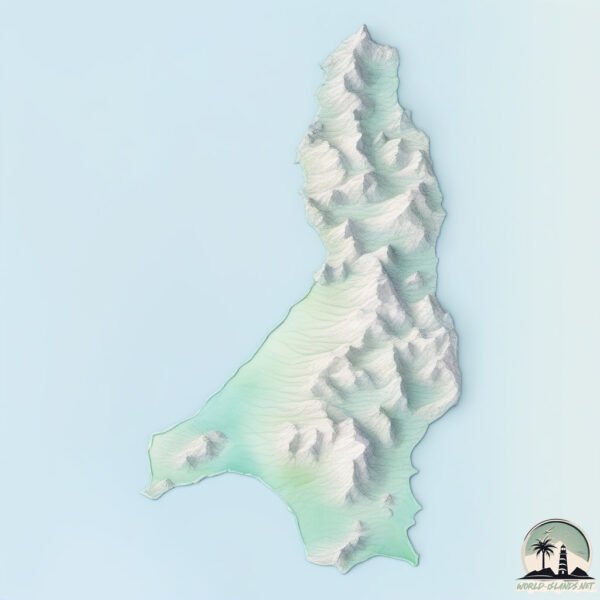Welcome to Cedros , a Dry island in the North Pacific Ocean, part of the majestic Pacific Ocean. This guide offers a comprehensive overview of what makes Cedros unique – from its geography and climate to its population, infrastructure, and beyond. Dive into the details:
Geography and size of Cedros
Size: 350.4 km²Coastline: 143 kmOcean: Pacific OceanSea: North Pacific OceanContinent: North America
Cedros is a Large Island spanning 350 km² with a coastline of 143 km.
Archipel: –
Tectonic Plate: Pacific – The world’s largest tectonic plate, covering much of the Pacific Ocean, known for the Pacific Ring of Fire with extensive seismic and volcanic activity.
The geographic heart of the island is pinpointed at these coordinates:
Climate and weather of Cedros
Climate Zone: DryClimate Details: Cold Desert ClimateTemperature: Cold
Climate Characteristics: Similar in dryness to hot deserts but with cold winters. Days can be warm or hot, while nights are typically chilly with common frost occurrences.
Topography and nature of Cedros
Timezone: UTC-07:00Timezone places: America/DenverMax. Elevation: 1074 m Mean Elevation: 286 mVegetation: ShrublandTree Coverage: 8%
The mean elevation is 286 m. The highest elevation on the island reaches approximately 1074 meters above sea level. The island is characterized by Plateau: Elevated flatlands rising sharply above the surrounding area, with a maximum elevation over 500 meters but a mean elevation less than 300 meters, forming unique highland areas on islands.
Dominating Vegetation: Shrubland
Vegetation: 10 vegetation zones – Very Highly Diverse Island
Infrastructure and Travelling to Cedros
Does the island have a public airport? no .
Does the island have a major port? yes .
The mean population of Cedros is 7 per km². Cedros is Gently Populated. The island belongs to Mexico .
Continuing your journey, Angel de la Guarda is the next notable island, situated merely km away.
Huamalgüeños, The Fog People of Cedros Island: Mexico Unexplained, Episode 244
Some 300 Huamalgüeño Indians of Cedros Island left their Pacific paradise to integrate into the Spanish mission system on the ...
Huamalgüeños, The Fog People of Cedros Island: Mexico Unexplained, Episode 244
Some 300 Huamalgüeño Indians of Cedros Island left their Pacific ...
Some 300 Huamalgüeño Indians of Cedros Island left their Pacific paradise to integrate into the Spanish mission system on the ...
Exploring the Arroyos of Isla Cedros | Baja California | Lindblad Expeditions-National Geographic
While exploring an arroyo, guests look for tiny pockets of moisture to ...
While exploring an arroyo, guests look for tiny pockets of moisture to spot animal and plant life. Video by Dexter Sear aboard the ...
Traveling To Cedros Island, Mexico With Kieran Anderson!
Have you ever taken a fishing trip to Mexico? This week, Salt Life ...
Have you ever taken a fishing trip to Mexico? This week, Salt Life team member Kieran Anderson headed south to Cedros Island ...
Mexico is classified as Emerging region: MIKT: Mexico, Indonesia, South Korea, and Turkey – Economies recognized for their development potential and emerging market status. The level of income is Upper middle income.
News – Latest Updates and Headlines from Cedros
Stay informed with the most recent news and important headlines from Cedros. Here’s a roundup of the latest developments.
Loading...
Please note: The data used here has been primarily extracted from satellite readings. Deviations from exact values may occur, particularly regarding the height of elevations and population density. Land area and coastline measurements refer to average values at mean high tide.

